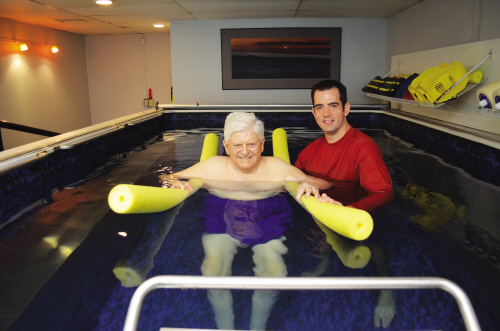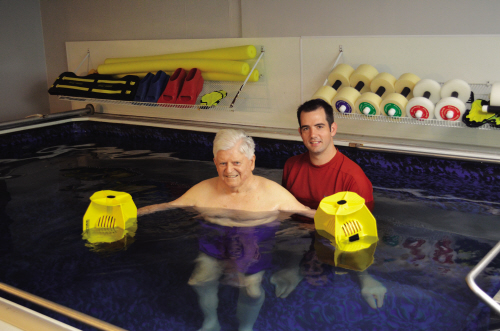Unlike “water aerobics,” aquatic therapy is a specialty of physical therapy performed in a warm-water pool to assist patients in healing. The effectiveness of an aquatic program rests largely on the physical properties of water, along with the skilled guidance of a qualified physical therapist.
The water’s buoyancy removes the stress and pressure on muscles and joints, which lowers pain levels and allows for greater range of motion during exercises. This safe, weight-free environment allows patients to exercise pain-free for longer periods. There is no other exercise that can provide this type of low-impact, calorie-burning environment.
The water’s viscosity assists weaker patients, while providing resistance for patients who are strong enough to increase their speed of body movements. Water makes muscles work harder than the same exercises on land.
The hydrostatic pressure (equilibrium) of the water decreases joint pain and soft tissue swelling at the injured sites.
The water’s warm temperature relaxes tight muscles and increases blood flow. Warm water allows patients to be comfortable and exercise as soon as they are immersed, foregoing the need for a lengthy warm-up period.
One of the biggest benefits of aquatherapy is the emotional boost patients get when they are able to do things in the water that they normally cannot do on land.
Aquatic therapy is a powerful, motivating choice for those who would like to break the cycle of chronic pain, increase strength or range of motion, improve balance and coordination, reduce stress and anxiety, and enhance feelings of well-being and confidence.







Leave a Reply